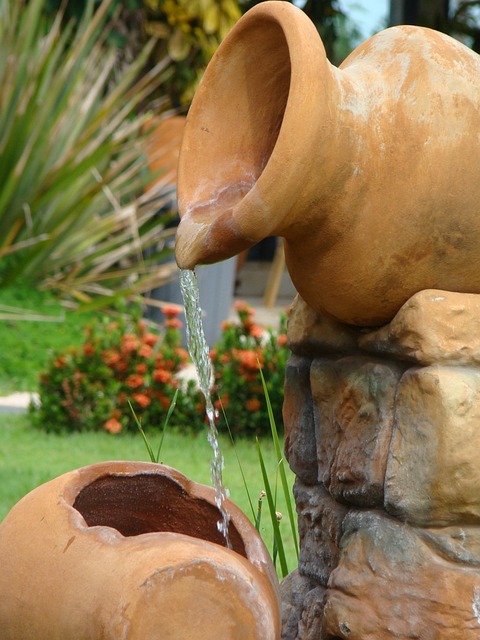Defining zones in a multi-purpose backyard through strategic planting and structural design enhances both functionality and aesthetics. Evergreens and seasonal perennials create natural barriers, while pergolas, fences, and raised beds offer dedicated spaces for relaxation, dining, gardening, and play. This integrated approach allows year-round enjoyment and adaptability to diverse needs and seasonal changes, making the multi-purpose backyard layout a dynamic and inviting environment.
Create a functional and visually appealing multi-purpose backyard layout by defining zones with plants and structures. This comprehensive guide explores effective strategies for organizing your outdoor space, catering to various activities from relaxation to entertainment. Learn how incorporating plants as natural boundaries and utilizing structural elements like pergolas and fences can enhance both aesthetics and functionality in your multi-purpose backyard layout.
Understanding Zone Definition in Multi-Purpose Backyards
Defining zones within a multi-purpose backyard is an essential step in creating a functional and aesthetically pleasing outdoor space. In this context, zone definition involves dividing the backyard into distinct areas dedicated to specific purposes, such as entertaining guests, relaxing, gardening, or playing. Each zone serves a unique role, ensuring that every corner of the backyard contributes to the overall experience.
By implementing plants and structures, you can effectively create these zones. Tall hedges, privacy fences, or trellises can delineate boundaries, providing both visual separation and privacy. On the other hand, low-growing ground covers, stepping stones, or pathways help guide movement between zones, ensuring a seamless transition from one activity to another. This strategic layout not only enhances the backyard’s functionality but also creates a visually appealing multi-purpose backyard landscape.
Incorporating Plants for Visual and Functional Boundaries
Incorporating plants into your multi-purpose backyard layout offers a visually appealing and functional solution for defining different zones. Plants, from tall hedges to vibrant flower beds, can seamlessly separate outdoor spaces while adding texture, color, and natural beauty. Consider using evergreen shrubs or trees to create year-round boundaries, providing privacy and shade. For seasonal interest, incorporate flowering perennials that bloom at various times, attracting pollinators and creating a dynamic landscape. In addition to their aesthetic value, plants serve as living barriers, controlling erosion, reducing noise, and providing habitat for local wildlife. By thoughtfully selecting plant species suited to your climate and soil conditions, you can craft natural boundaries that enhance both the look and function of your outdoor oasis.
Utilizing Structures to Create Distinct Spaces
Using structures like pergolas, fences, and raised beds can dramatically transform your backyard into a well-defined, multi-purpose space. These elements serve both aesthetic and functional purposes, creating distinct areas for different activities. For example, a pergola can provide a shaded seating area while framing a dining zone, offering a perfect blend of relaxation and entertainment. Fences not only define boundaries but can also create intimate spaces, such as a secluded garden or a dedicated play area for kids. Raised beds, on the other hand, are ideal for gardening enthusiasts, allowing them to organize plants by type, color, or height, thus enhancing both visual appeal and accessibility.
A multi-purpose backyard layout designed with structures in mind offers versatility and adaptability, catering to various needs throughout the year. In summer, you can host gatherings under the pergola, while raised beds provide a vibrant vegetable garden. During cooler months, these same areas can become cozy reading nooks or outdoor offices, thanks to added seating and warming elements like fire pits. This strategic use of structures ensures your backyard remains engaging and useful, satisfying both functional requirements and aesthetic desires.
Combining Planting and Structural Elements for Optimal Layout
Creating a multi-purpose backyard layout involves a harmonious blend of planting and structural elements. Plants serve as natural dividers, providing texture and color while delineating spaces. For instance, tall hedges or privacy screens can create private areas for relaxation or dining, while low-growing ground covers and flowering shrubs offer subtle boundaries. These green features not only enhance aesthetics but also contribute to a healthier environment by attracting beneficial insects and birds.
Structural elements, such as pergolas, arbors, and trellises, complement the natural divisions provided by plants. They add structural interest and can serve multiple functions, like providing shade or a place to grow climbing plants. Combining these elements allows for flexible spaces that adapt to various activities and seasons. For example, a structured pathway lined with plants can guide foot traffic while also creating defined areas for entertaining, gardening, or simply enjoying the outdoors.
Defining zones in a multi-purpose backyard is an art that combines plants and structures to create functional and visually appealing spaces. By strategically placing plants and incorporating various structural elements, you can transform your outdoor area into a harmonious blend of nature and design. This article has explored the power of zone definition through natural means, offering insights on using plants and structures to enhance your multi-purpose backyard layout. Remember, the key lies in balance: blending organic elements with man-made structures to create a symphony of distinct yet interconnected areas that cater to various activities and aesthetics.
